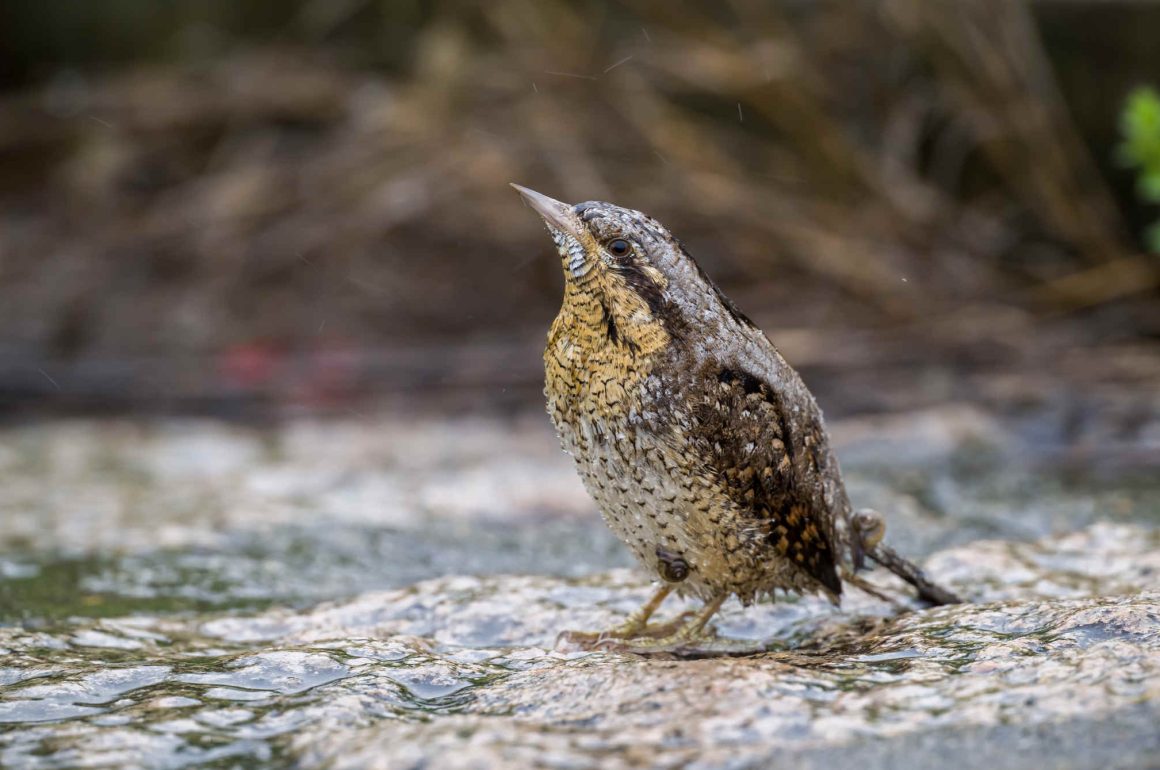
1. Here in Britain we have a saying that there’s no such thing as bad weather, just the wrong clothing. I’m not sure that you can really call -20degC (-7.6degF) bad weather, as it’s quite normal in the Arctic, and I was in Arctic Finland in December. However, I was guilty of having the wrong clothing, or, to be more precise, footwear. I was standing in deep snow, waiting (or hoping) for a Pine Grosbeak to come to a feeder. It didn’t appear, and nor did much else apart from Bullfinches and a Siberian Tit. All the while my feet were getting colder and colder until I couldn’t bear the agony any more.

Bullfinch
Fortunately I was about to fly south, and we were birding not far from the airport. Half an hour later I thawed my frozen feet out by putting them, one by one, in hot water in the wash basin in the gentlemen’s washroom at Kuusamo Airport. It’s a very small airport and fortunately no one came in to see a bare-footed Englishman trying to bring some circulation back to his frozen feet. By the time I boarded my flight back to Helsinki I could feel my toes again, but it would be another 10 years before I finally saw my first Pine Grosbeak. And yes, that was in Arctic Finland not far from Kuusamo, and in deep snow. This time I had the right footwear. (David Tomlinson)
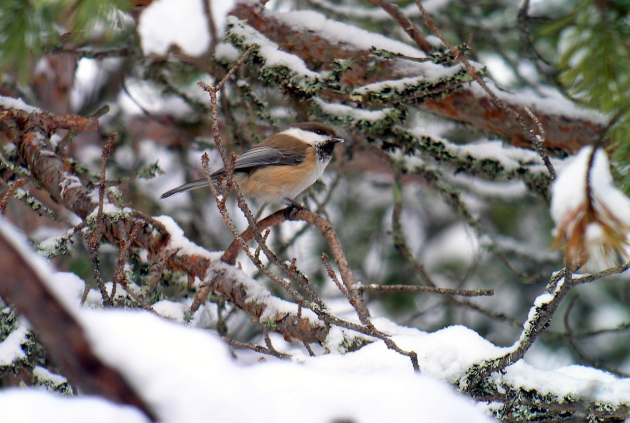
Siberian Tit
2. The Cape Doctor had been blowing for a week and we were so sick of it. The Cape Doctor blows all ailments away – or at least that’s the reason for naming Cape Town’s southeasterly winds as such. Clean, clear skies are great but the continuous howling of the wind gets on your nerves. Time to move north, into the Northern Cape province of South Africa and look for larks and pipits. One stop-over at the Velddrif saltworks and scan for interesting migrants. The wind was still very strong so scoping was hard. Hey! That’s an odd one… Scope out, vibration, out of focus, in focus. Swear. Curse. White rump, yes. No. Maybe. Eye stripe? Impossible to see well. Scalloped back, yes. After 20 minutes of staring at the bird we decided to call it a White-rumped Sandpiper, but with a question mark. With better weather, the identification would have been much easier, but would the animal have stayed in the same place for such a long time? Was it even alive or just a dead bird moving in the wind? (Peter Penning)
3. My birding story started two days earlier on December 25, 2011. A Smew had been sighted in a harbour, east of Toronto. The ebird reviewers and the local experts argued whether it was an aviary escapee or a wild bird. On December 27, my birding buddy Theresa called to say it had been declared a wild and countable bird. I told her my husband and I were coming to get her, so we could see it. She was surprised, because by the time we collected her and got to the harbour, it would be close to sunset. I was determined not to miss a lifer for both of us.
It was already a gloomy day. As we were halfway to the bird, it started to rain, but that quickly turned to sleet. We got to the harbour and saw a birder standing near the railings. We asked about the Smew. He said it had been right there, about 15 minutes earlier. (That is the story of my birding life.) He told us it was over on the other side of the harbour. We squinted through Theresa’s scope, as the sleet came down and the daylight faded. At last, we found the bird. We didn’t have the great looks we hoped for, but we had accomplished our mission. (Leslie Kinrys)

Male Smew
4. On some birding trips, I feel like Rob McKenna, the truck driver in Douglas Adams’ Hitchhiker’s Guide to the Galaxy. Driving around in his truck, it rains on him every single day of his life as – though he does not know it – he is a rain god and therefore the clouds want “to be near him, to love him, to cherish him and to water him”.
Yes, there is car birding – but even that gets difficult once the rain is too hard. I have experimented with various constructions allowing me to keep some windows open without getting too much water in – constructions involving plastic sheets and curtains – but so far unsuccessfully. The MacGyver in me seems to be a lot weaker than the McKenna. It gets to the point where I would like to just stop the car and yell at the weather, pointless as that might be.
There are positive aspects of birding in heavy rain. Some birds allow you to get closer than usual, possibly just having lost the will to live under such wet conditions. One of my favourite photos thus taken is that of a Eurasian Wryneck actually being climbed on by two snails. The bird must have felt even worse than me on that day. (Kai Pflug)
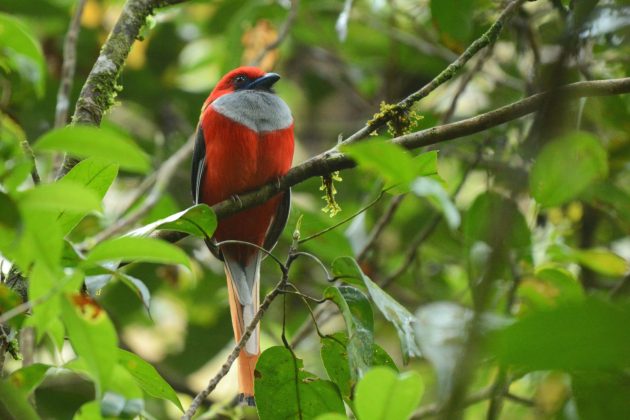
Whitehead’s Trogon
5. Mount Kinabalu rises imposingly from the tropical lowlands of Malaysian Borneo to a height of over 4,000 metres. This translates into an impressive gradient of montane forest and an accordingly imposing array of mouth-watering bird species, including the popular “Whitehead’s Trio” (Whitehead’s Trogon, Whitehead’s Broadbill & Whitehead’s Spiderhunter). Unfortunately, birding in these altitudes is somewhat of a double-edged sword, in that impenetrable fog often erases any possibility of seeing these beasts. I was in just this situation when, as part of a longer Borneo tour many years ago, I trudged along the trails of Mt Kinabalu National Park, hoping to get a glimpse of a group of Bare-headed Laughingthrushes that were calling just metres away, but completely invisible behind the grey veil of fog. After an hour of waiting in the clammy cold, the laughingtrushes’ hoots gradually became increasingly muffled by the fog, indicating that these ghosts moved away from the trail, never to be seen. In itself, I would not have dwelled on this moment, but such a stoic attitude did not hold after experiencing the same with most other specials heard in my three days on the mountain. My patience paid off during a brief break in the fog on the final afternoon with three Whitehead’s Trogons, their cracking red plumage bursting in the green of the moss-covered branches. (Luca Feuerriegel)
Note: Pictures of Bullfinch and Siberian Tit by David Tomlinson; picture of Whitehead’s Trogon by Luca Feuerriegel; picture of Smew by Andreas Trepte posted to Wikipedia Commons, an online source of copyright-free photos; picture at top of article of Eurasian Wryneck by Kai Pflug.


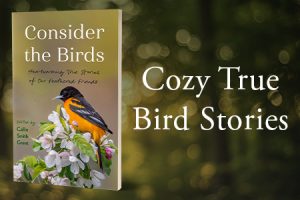


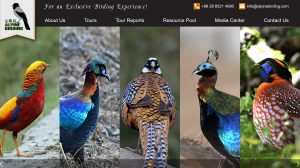
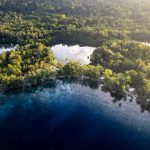
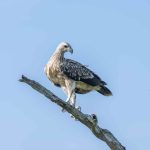
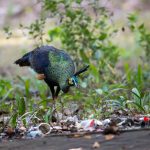
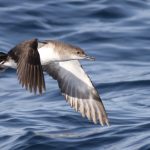
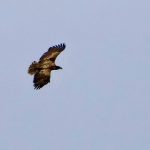
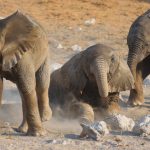
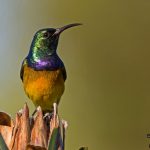
@David: hilarious story about the Pine Grosbeak. We have them in the Upper Penisula of Michigan and sometimes they even come a little south. Unfortunately, the best season for seeing them is the middle of winter. The snowyier the better.
@Leslie: I feel your pain about the Smew. With the great photo attached, I was surprised, knowing that you take great photos. I’m glad I read to the end to see that it came from Wikipedia Commons. I saw my highly anticipated life Smew this past spring in Finland. It was about 200m away (1/4 mile). I got plenty of photos of a little white dot.
@Kai: I feel bad for that little Wryneck.
@Luca: This past spring I traveled with someone who had just come from a trip to Borneo. I would love to see Whitehead’s Trogan, but after hearing her stories I thought, hmmm, this is a bird I probably will never see.